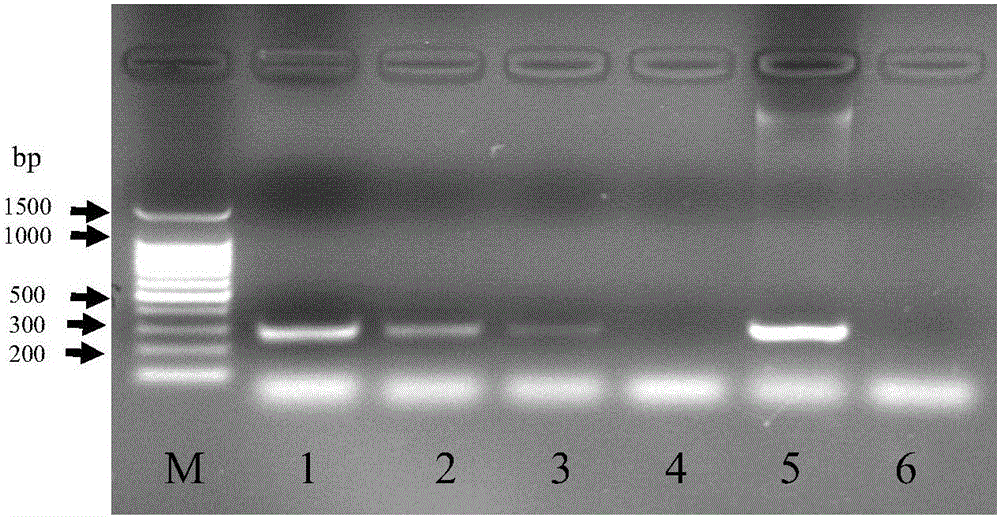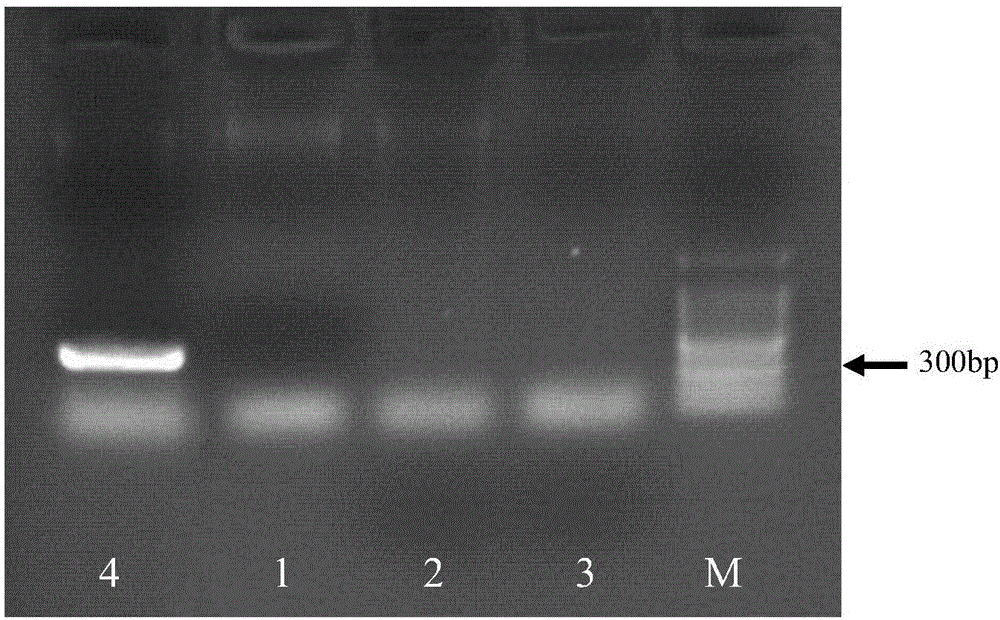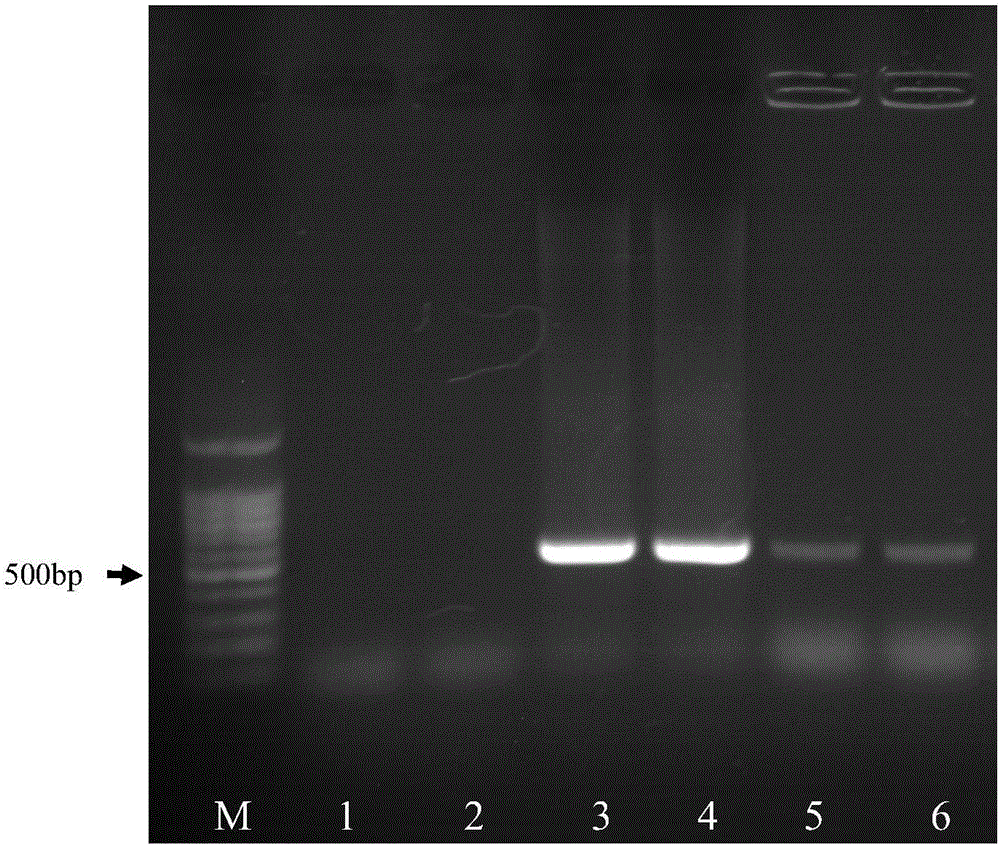Method for rapidly detecting salmonellae
A rapid technology for Salmonella, applied in biochemical equipment and methods, microbiological determination/inspection, and resistance to vector-borne diseases. Wide range of application promotion, simple and fast operation, and short time required
- Summary
- Abstract
- Description
- Claims
- Application Information
AI Technical Summary
Problems solved by technology
Method used
Image
Examples
preparation Embodiment 1
[0036] In Example 1 of this preparation, Antibody 1 was used to prepare the immunomagnetic beads used in the method of the present invention.
[0037] Surface-modified superparamagnetic Fe with carboxyl groups activated by 1-ethyl-3-(3-dimethylaminopropyl)-carbodiimide (EDC) and N-hydroxysuccinimide (NHS) 3 o 4 Polystyrene composite microspheres (purchased from Shanghai Aorun Micro-Nano New Material Technology Co., Ltd., PM3-020 polymer magnetic balls, the concentration is 10mg / mL, the particle size is 180nm, and the surface is modified with carboxyl functional groups) are used as magnetic balls , take 2 mg of magnetic spheres and disperse them in the phosphate buffer solution, the concentration of the magnetic spheres in the dispersion is 2 mg / mL. Mix 0.2mg of specific antibody (dissolved in 1mL of phosphate buffer) with 2mg of magnetic balls, keep in a shaker (200r / min) for 3h at room temperature, and then wash by magnetic separation to remove uncoupled magnetic beads For ...
Embodiment 1
[0039] This example is used to illustrate the sensitivity, specificity and accuracy of the method of the present invention.
[0040] Different bacterial strains (see Table 1) were mixed with 2mL of PBS to obtain bacterial suspensions of different concentrations (i.e. samples to be tested), and immunomagnetic bead capture, bacterial culture, PCR amplification and electrophoresis detection were carried out in the following manner, wherein, The samples to be tested in the dead bacteria group were obtained by inactivating the bacteria suspension under the conditions of 121°C and 0.103MPa for 30min.
[0041] Table 1
[0042]
[0043] Note:" Picture 1-1 "express figure 1 1 lane in , and so on.
[0044] (1) Immunomagnetic bead capture
[0045] Add the bacterial suspension to the immunomagnetic bead centrifuge tube obtained in Preparation Example 1, oscillate gently on a vortex mixer, place in a mixer or a shaker, and rotate (or oscillate) at room temperature (25°C) ) for 30 ...
Embodiment 2
[0063] Carry out the detection of Salmonella according to the method of embodiment 1, difference is, the sample used is as shown in table 4, and the sequence of the specific primer (the FimY gene that can amplify 526bp) that PCR amplification uses is as follows:
[0064] Forward primer (FimYF): 5'-GCCGGTAAACTACACGATGA-3' (SEQ ID NO: 3)
[0065] Reverse primer (FimYR): 5'-GAGTTACTGAACCAACAGCT-3' (SEQ ID NO: 4)
[0066] Table 4
[0067]
[0068] Note:" Figure 3-1 "express image 3 1 lane in , and so on.
[0069] Electrophoresis results such as image 3 Shown: the experimental group 1-2 and the positive control group 3-4 present an obvious 526bp band, while the negative control group 5 and 6 have no obvious band. From image 3 It can also be seen that the method of the present invention can be used to specifically and accurately detect Salmonella.
PUM
| Property | Measurement | Unit |
|---|---|---|
| particle diameter | aaaaa | aaaaa |
Abstract
Description
Claims
Application Information
 Login to View More
Login to View More - R&D
- Intellectual Property
- Life Sciences
- Materials
- Tech Scout
- Unparalleled Data Quality
- Higher Quality Content
- 60% Fewer Hallucinations
Browse by: Latest US Patents, China's latest patents, Technical Efficacy Thesaurus, Application Domain, Technology Topic, Popular Technical Reports.
© 2025 PatSnap. All rights reserved.Legal|Privacy policy|Modern Slavery Act Transparency Statement|Sitemap|About US| Contact US: help@patsnap.com



